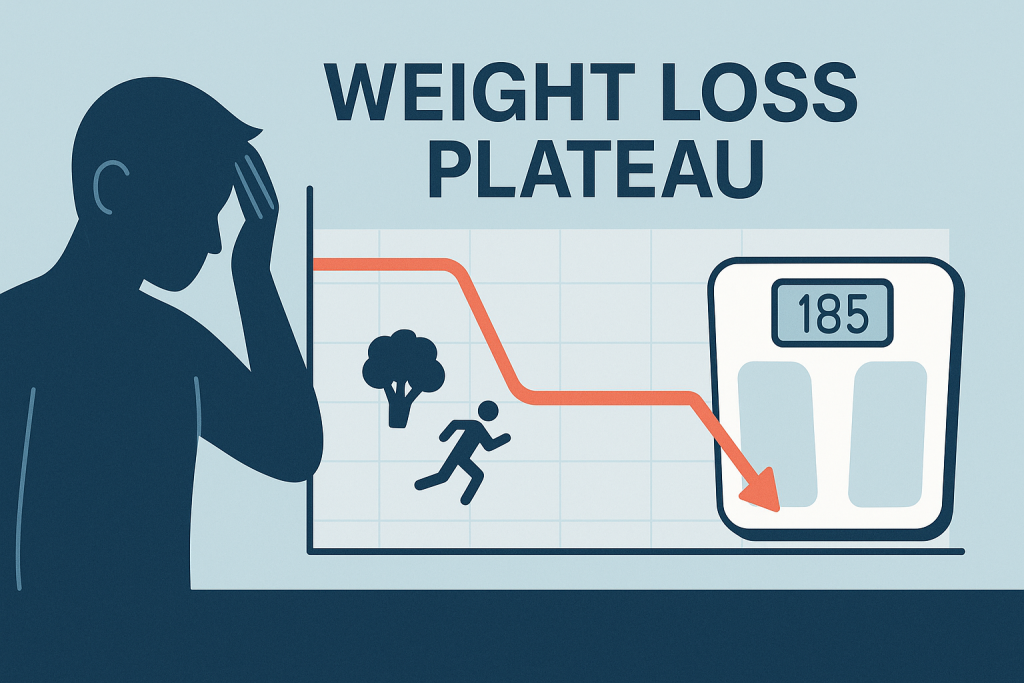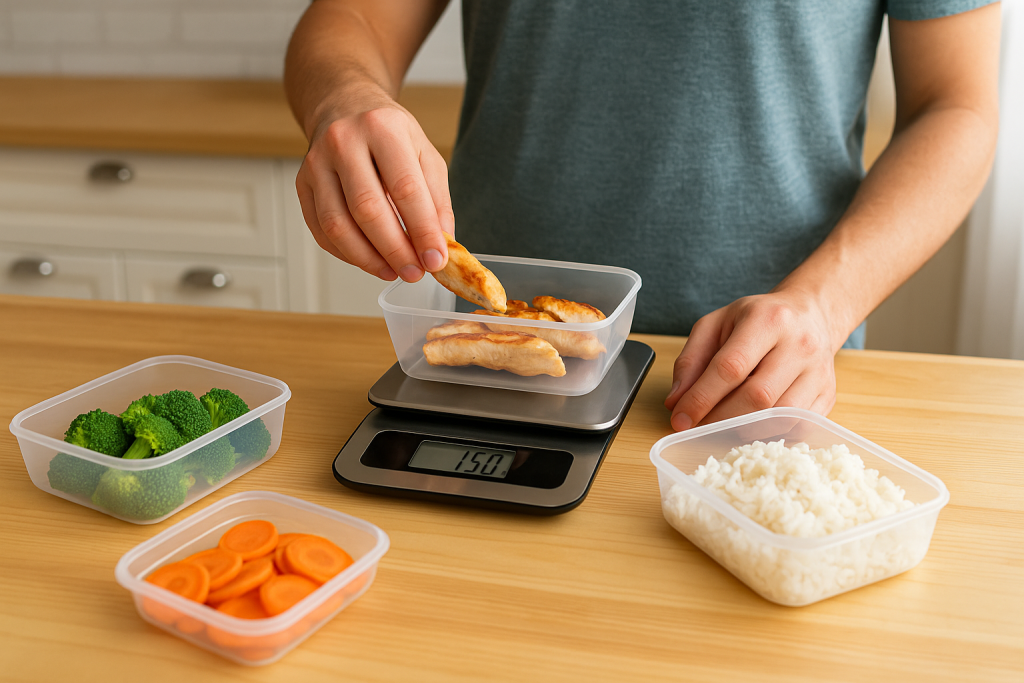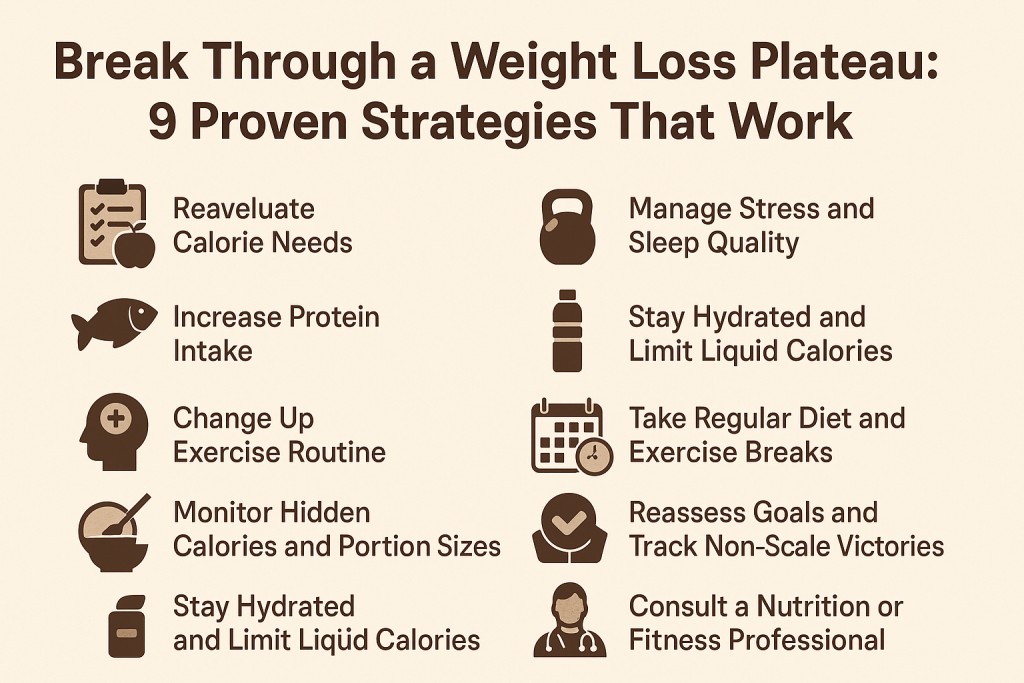Break Through a Weight Loss Plateau: 9 Proven Strategies That Work
Understanding the Weight Loss Plateau
Experiencing a weight loss plateau can be frustrating, especially after weeks or months of steady progress. A weight loss plateau occurs when your body adapts to your current diet and exercise routine, causing weight loss to stall even if you haven’t made any significant changes. This phenomenon is common and usually indicates your metabolism has adjusted to your new weight and calorie intake.
Research indicates that most people hit a plateau at some point during their weight loss journey. According to the National Institutes of Health, the body naturally resists changes in weight, making it crucial to reassess your strategy if your progress halts. Understanding the reasons behind a plateau can empower you to make informed adjustments and keep moving toward your goals.
Let’s explore the most effective ways to break through a weight loss plateau and restart your progress with actionable steps and expert-backed advice.

1. Reevaluate Your Calorie Needs
As you lose weight, your body requires fewer calories to function. If you haven’t recalculated your calorie needs, you might be eating more than you realize for your current weight. Metabolic adaptation—also known as adaptive thermogenesis—means your metabolism slows as you lose fat and muscle, reducing your total daily energy expenditure.
Use an updated calorie calculator based on your current weight, age, height, gender, and activity level. Consider keeping a food diary or using apps like MyFitnessPal to track your calories more accurately. This helps you identify hidden sources of extra calories and keeps you accountable.
- Weigh foods rather than estimating portions.
- Track condiments, beverages, and snacks.
- Adjust calorie targets as your weight drops.

2. Increase Protein Intake for Metabolic Boost
Protein is essential for maintaining muscle mass and promoting satiety during weight loss. Studies show that a higher-protein diet can boost your metabolism, reduce cravings, and help you burn more calories—even at rest.
Aim for at least 25-30% of your daily calories from protein-rich foods such as lean meats, fish, eggs, dairy, legumes, and tofu. Not only can this help you break a plateau, but it also aids in preserving lean muscle, which is crucial for long-term fat loss.
- Include protein in every meal and snack.
- Try adding Greek yogurt, cottage cheese, or protein shakes post-workout.
- Monitor changes in appetite and body composition.

3. Change Up Your Exercise Routine
Repeating the same workouts can cause your body to adapt, decreasing your calorie burn over time. To break a plateau, it’s vital to challenge your body in new ways. Incorporating a mix of strength training, cardio, and high-intensity interval training (HIIT) can reignite fat loss by preventing adaptation.
Sample Ways to Upgrade Your Workouts
- Switch between steady-state cardio and HIIT sessions.
- Increase workout intensity, duration, or frequency.
- Incorporate new activities like cycling, swimming, or group classes.
- Focus on progressive overload in strength training (heavier weights, more reps).
Adding variety not only boosts your metabolism but can also make workouts more enjoyable and sustainable.

4. Manage Stress and Improve Sleep Quality
Chronic stress and poor sleep quality are often overlooked contributors to weight loss plateaus. High cortisol levels can promote fat storage, particularly in the abdominal area. In addition, lack of sleep can disrupt hunger hormones like ghrelin and leptin, increasing cravings and reducing your willpower.
Prioritize 7-9 hours of quality sleep per night and practice stress-reduction techniques such as meditation, deep breathing, or yoga. Try setting a regular bedtime, creating a relaxing nighttime routine, and limiting screen time before bed.
- Limit caffeine in the afternoon and evening.
- Practice mindfulness to reduce anxiety-induced eating.
- Consider journaling or talking with a counselor if stress is ongoing.
5. Monitor Hidden Calories and Portion Sizes
Even small amounts of untracked food can add up, leading to a calorie surplus that stalls weight loss. Restaurants, processed foods, and even healthy snacks can contain more calories than you expect.
Be honest with yourself about portions and pay attention to “healthy” foods that may be calorie-dense, such as nuts, seeds, avocados, and oils. Use measuring cups or a food scale when possible to keep portions in check.
- Read nutrition labels carefully.
- Prepare more meals at home to control ingredients.
- Limit liquid calories from juices, soda, and alcohol.
6. Stay Hydrated and Limit Liquid Calories
Proper hydration is essential for metabolism, digestion, and overall health. Sometimes, thirst can be mistaken for hunger, leading to unnecessary snacking.
Aim for at least 8 cups (64 ounces) of water per day, more if you’re physically active. Avoid sugary drinks and limit alcohol, both of which can contribute significant hidden calories.
- Carry a water bottle and sip throughout the day.
- Start meals with a glass of water to reduce overeating.
- Choose sparkling water with lemon or lime as a healthy alternative to sodas.
7. Take Regular Diet and Exercise Breaks
Constantly restricting calories or overtraining can backfire, slowing your metabolism and increasing fatigue. Short, planned breaks in your routine—known as diet breaks or recovery weeks—can help reset your metabolism and give your body and mind a chance to recover.
During a diet break, increase your calories to maintenance level for one week while maintaining healthy food choices. Focus on rest, stress reduction, and self-care. After the break, return to your revised plan with renewed energy and motivation.
8. Reassess Your Goals and Track Non-Scale Victories
While losing weight is a common goal, progress isn’t always reflected on the scale. Your body may be building muscle, losing inches, or improving in fitness and health markers. Celebrate non-scale victories like better sleep, lower blood pressure, increased stamina, or fitting into smaller clothes.
Write down your goals, monitor your progress with photos, body measurements, and fitness milestones. Recognizing these achievements can keep you motivated through plateaus and setbacks.
9. Consult a Nutrition or Fitness Professional
If you’ve tried multiple strategies and are still struggling, consider reaching out to a registered dietitian, nutritionist, or certified personal trainer. A professional can provide personalized advice, help you identify hidden obstacles, and keep you accountable to your goals.
They can also evaluate other factors such as medical conditions, medications, and lifestyle habits that might be contributing to your plateau. Sometimes, just having a new perspective and support system can make all the difference in breaking through a tough phase.
Frequently Asked Questions About Weight Loss Plateaus
How long does a weight loss plateau typically last?
Most plateaus last anywhere from a few days to several weeks. The key is to stay consistent, avoid drastic restrictions, and implement small, sustainable changes to jumpstart progress.
Is it normal to hit more than one plateau?
Yes, multiple plateaus are common, especially as you approach your goal weight. Each time your body adapts, it may require new adjustments to your plan.
Should I lower my calories more if I hit a plateau?
Not necessarily. Instead of slashing calories further, try focusing on food quality, workout intensity, and lifestyle habits. Too few calories can slow your metabolism and make plateaus worse.
Conclusion: Break Through Your Weight Loss Plateau for Lasting Success
Breaking through a weight loss plateau requires patience, persistence, and a willingness to adjust your approach. By applying these 9 proven strategies—from recalculating calories and boosting protein intake to managing stress and seeking professional support—you can overcome obstacles and reignite your weight loss journey.
Remember, plateaus are a natural part of the process and an opportunity to learn more about your body. Stay focused on your long-term goals, celebrate every victory, and know that lasting results are within your reach.


